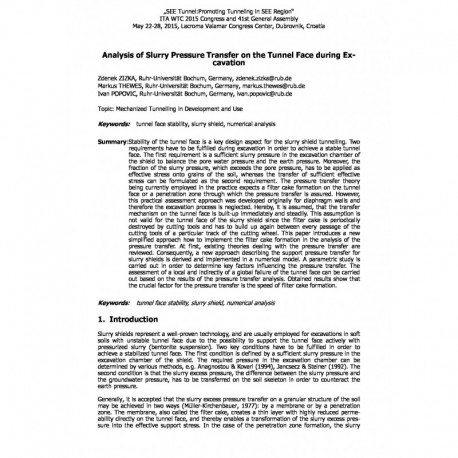Cart
0
0
No document
0,00 €
Total
Document successfully added to your shopping cart
Quantity
Total
There are 0 items in your cart.
There is 1 item in your cart.
Total documents
Total shipping
To be determined
Total
Search & filter
Search for a publication
Search & filter

Analysis of Slurry Pressure Transfer on the Tunnel Face during Excavation
wtc2015_full_zizka
M. Thewes / Z. Zizka / I. Popovic
Slurry shields represent a well-proven technology, and are usually employed for excavations in soft soils with unstable tunnel face due to the possibility to support the tunnel face actively with pressurized slurry (bentonite suspension). Two key conditions have to be fulfilled in order to achieve a stabilized tunnel face. The first condition is defined by a sufficient slurry pressure in the excavation chamber of the shield. The required pressure in the excavation chamber can be determined by various methods, e.g. Anagnostou & Kovari (1994), Jancsecz & Steiner (1992). The second condition is that the slurry excess pressure, the difference between the slurry pressure and the groundwater pressure, has to be transferred on the soil skeleton in order to counteract the earth pressure. Generally, it is accepted that the slurry excess pressure transfer on a granular structure of the soil may be achieved in two ways (Müller-Kirchenbauer, 1977): by a membrane or by a penetration zone. The membrane, also called the filter cake, creates a thin layer with highly reduced perme-ability directly on the tunnel face, and thereby enables a transformation of the slurry excess pres-sure into the effective support stress. In the case of the penetration zone formation, the slurry


